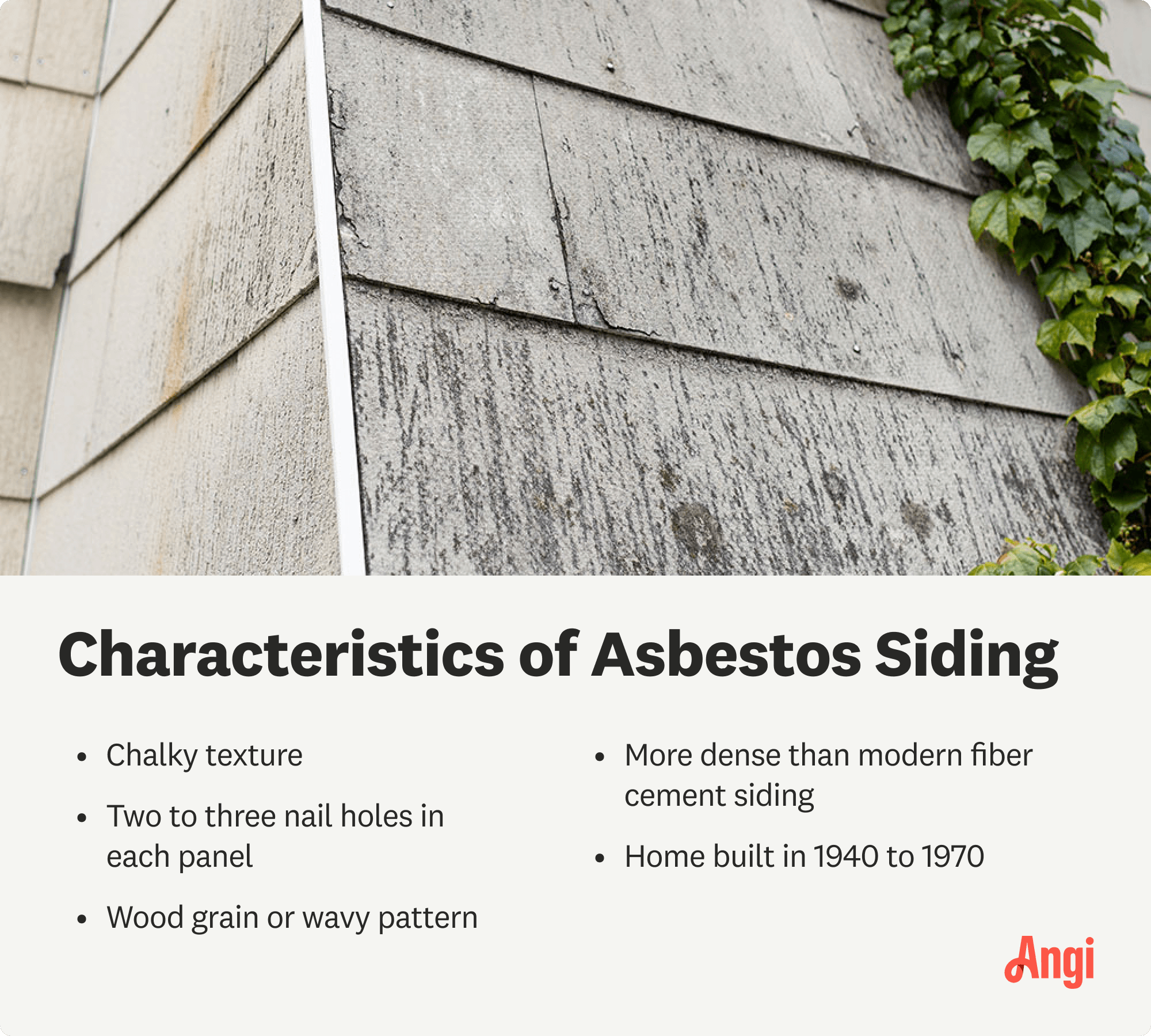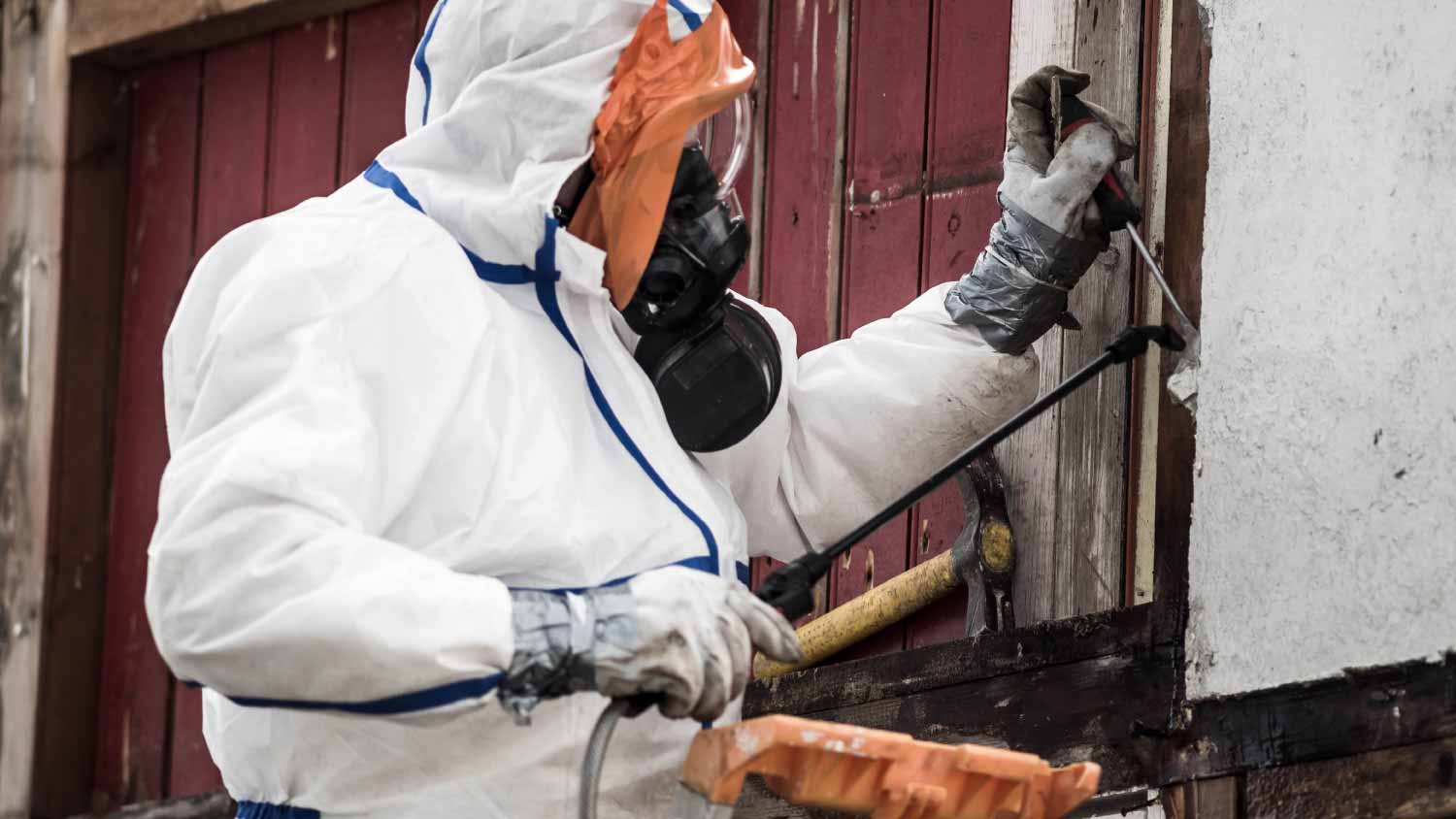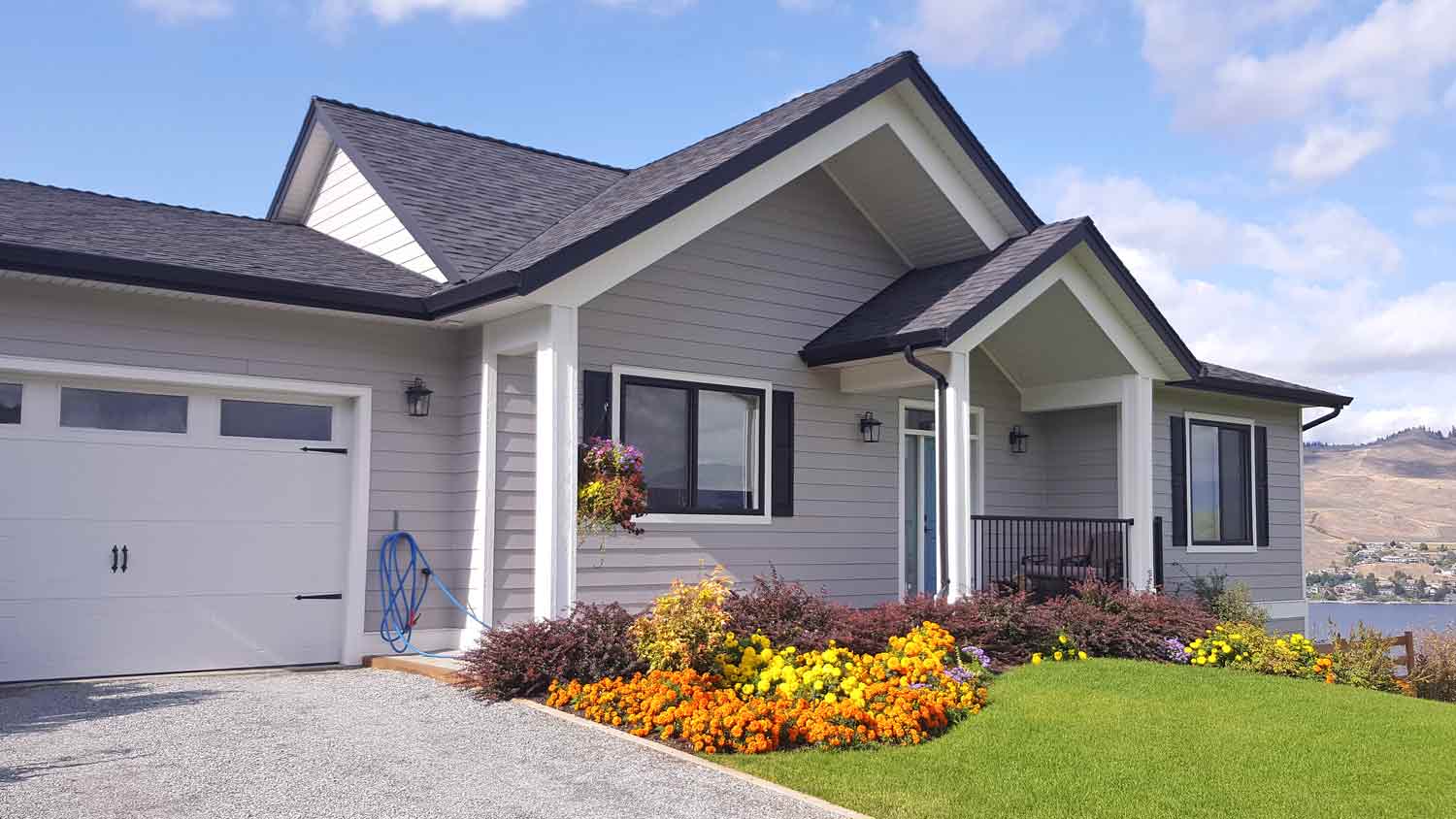
The cost of Hardie board siding depends on the size of your home and the style and color you choose. Get a more accurate estimate with our in-depth cost guide.
It’s “best” to leave asbestos siding alone


Asbestos siding is a material used on the outside of houses and buildings to protect them against fire, weather, and other damages.
In 1989, the EPA partially banned asbestos because it’s a known carcinogen (cancer-causing agent).
Removing asbestos siding can cause asbestos exposure, increasing the risk of lung disease and lung cancer.
Asbestos removal costs between $450 and $6,000, depending on the removal process, amount of asbestos, and size of the area.
Asbestos siding can be covered by vinyl, fiber-cement, or aluminum siding.
Asbestos siding protects the exterior of some homes, but that doesn’t take away the neon warning signs against asbestos and its hazardous removal. Thousands of homes are covered in asbestos siding, and yours could be, too. So what is asbestos siding? Let’s talk about what it is, its pros and cons, and what you can do if you have it.

Asbestos siding is a protective material—made of cement and asbestos—added to the exterior of houses. Asbestos is a naturally occurring mineral that’s resistant to fire, electricity, and corrosion. Because of its benefits, this made asbestos very popular before the 1980s. It was bonded to materials like cement because it would make it stronger. Beyond asbestos siding, asbestos was used everywhere—for roofing shingles, ceiling and floor tiles, and even in cars for brakes and transmission parts. Nowadays, asbestos and its products get a bad rap, and rightfully so. While asbestos siding provides an extra layer of protection to your home, disturbing it introduces a ton of potential health hazards, including cancer.
| Pros | Cons |
|---|---|
| Inexpensive | Hazardous if disturbed |
| Fire-resistant | Hard to fix |
| Durable | Hard to replace |
| Good insulator | |
| Protects against insects |
When taking on this project, expect questions only a pro can answer. With our network of local pros, you'll get the job done and your questions answered—without the hassle and stress of doing it yourself.
There are thousands of homes in the U.S. with asbestos siding. While the presence of asbestos is alarming for many homeowners, asbestos siding isn’t cause for immediate concern. In 1989, the Environmental Protection Agency (EPA) partially banned most asbestos-containing products. Before that, asbestos was used everywhere. Contractors gravitated towards asbestos siding because it offered massive benefits.
Asbestos siding helped homeowners save money and protect their homes. Asbestos was inexpensive and wouldn’t put a huge dent in most homeowners’ budgets. The material is fire-resistant, weather-proof, and extremely durable. Because asbestos is a good insulator, asbestos siding increases energy efficiency while the tough material helps proof houses against insects like termites. And while asbestos siding is easy to clean and maintain, it’s hard to fix.
Difficult to repair and difficult to replace—these are two disadvantages of asbestos siding. Depending on how you look at it, the pros of asbestos siding outnumber the cons, but the cons outweigh the pros. There’s a reason the EPA banned new uses for asbestos in the ‘80s. Asbestos is a carcinogen, and carcinogens are substances that can cause cancer. When asbestos is disturbed—during removals, renovations, etc.—people can inhale or ingest the fibers. These tough fibers get stuck in the lungs and can cause lung disease and lung cancer, most notably, mesothelioma.
But just because a home is covered in asbestos siding doesn’t mean it poses a health risk. Instead, if it’s in good condition, leave it alone. If it’s damaged, it’ll need to be carefully and professionally repaired.
Before moving forward with any kind of home renovation or exterior DIY project, it’s good to know whether or not you have asbestos siding.

The word “asbestos” is triggering for homeowners. Before you panic about your siding or unwittingly plan a renovation while having asbestos, figure out what you’re dealing with.
Asbestos siding doesn’t have one guaranteed look. Instead, you’ll need to check your home for different characteristics to help pinpoint whether your siding has asbestos. If your home has asbestos siding, you might notice:
Shingle panels
Wood grain patterns
Chalky texture
Nail holes at the bottom of each shingle
Broken edges that are rough or sharp
Missing manufacturing code
Any combination of these factors could point to asbestos siding. Don’t panic. If undisturbed, asbestos siding is harmless, but here’s a question: what if you don’t want to be stuck with siding that was likely added over 40 years ago? What if there’s damage to multiple areas in your siding? Fortunately, homeowners have options. If you don’t want to leave your siding as is, you can opt for covering your asbestos siding or removing it altogether.
Removing asbestos siding should be a last resort. Handling asbestos isn’t a project for beginners or even seasoned do-it-yourselfers. If you decide to repair or remove asbestos from anywhere in your home, leave it to the professionals. And before you reach out to a contractor, think again. The job calls for your local asbestos abatement company.
Asbestos abatement companies take on all the work of dealing with asbestos siding. They’ll test your siding for asbestos, remove the siding with the right equipment, and make sure you, your family, and everyone else are safe from asbestos exposure.
Asbestos removal does come with a high price tag. On average, asbestos removal costs between $450 and $6,000. This all depends on the removal process, the amount of asbestos, and the size of the area. The dent in your budget might have you shying away from hiring professionals, but asbestos removal isn’t a project for cutting corners. The process is dangerous, and if you decide to go with asbestos siding removal, it’s your responsibility to make sure it’s handled safely and skillfully. Plus, depending on where you live, your town or city might require you to get a permit to work on your asbestos siding, and they’ll definitely require a professional.
Asbestos is a carcinogenic material, meaning it is capable of causing cancer. Before handling asbestos siding on your own, it’s important to be fully aware of the potential health hazards. When you inhale asbestos fibers, you become susceptible to a host of cancers and other serious health problems.
Asbestos exposures are most commonly known to cause mesothelioma, lung cancer, pleural disease, and asbestosis. For this reason, we strongly recommend leaving this dangerous job to an asbestos removal pro.
Covering asbestos siding is the safest option. Even if you decide against removal, that doesn’t mean you’re stuck looking at asbestos siding you don’t love.
A common alternative to removal is covering it with one of the ever-popular types of vinyl siding. While most siding companies can’t remove the asbestos for you, they can safely cover it with other options like aluminum or fiber cement. And if you think you’ll miss the wood grain pattern of your asbestos siding, you won’t. With many siding styles made to look like wood, your siding company can help you decide which siding is right for you: aluminum siding vs vinyl siding or fiber-cement siding vs vinyl.
You can choose one of several siding options to cover asbestos siding. The most common choice is vinyl due to its relatively low cost, durability, and easy installation and maintenance. Fiber cement siding is another popular choice, well-known for its sleek appearance, durability, and fire-resistance. Regardless of the material you choose, you’ll want to make safe installation a top priority.
From average costs to expert advice, get all the answers you need to get your job done.

The cost of Hardie board siding depends on the size of your home and the style and color you choose. Get a more accurate estimate with our in-depth cost guide.

Siding replacement costs around $11,000 on average, but several factors influence what you’ll pay. Our guide breaks down all the siding cost factors.

Insulated vinyl siding costs are about double traditional vinyl siding—but the energy savings are more than worth the investment. Learn more in our guide.

Knowing whether to install windows or siding first can save you time and money on your renovations. Here’s everything you need to know before you get started.

Lap siding is a common siding style available in various materials. Learn what lap siding is, its pros and cons, and how much it costs.

When you need to reface your home, a low-maintenance siding option can last longer, keep more money in your pocket, and keep your home better protected.